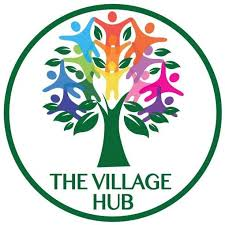
Healthy greetings, friends and patients of TVD,
As you know, I try to keep this newsletter “topical”, and what could be more in the news than 1) flu season and the recommendation for getting your flu shot, and 2) COVID-19 exposure and testing: timing, accuracy, best practices. Read on to learn more.
But lest we steep in viral infections and relative social isolation, let me offer a different interpretation of “SIP”, this from our friends at The Village Hub in Woodside. Many of you will recall that I was part of the founding team, and I continue to be a big believer in the project, and its fearless leader Pastor Ama Zenya. Pastor Ama has shared this clever take on “SIP” with me:
Sip in Safety
Even though we have to keep physically distant, let’s make sure physical isolation doesn’t turn into social or emotional isolation. If you’re out taking a morning walk or ride, you might want to let your path lead you over to the Village Hub. On the campus of Woodside Village Church (3154 Woodside Road), The Village Hub is a friendly meeting place to experience wellness and get everything from spiritual support to community connections, better health or share a great cup of coffee…all from a safe physical distance in the open air. There are plenty of chairs under the trees in the dappled sunlight. You can bring a book and stay as long as you like. Or strike up a conversation with a friend you never met before in an atmosphere of warmth and camaraderie. Masks are required unless you’re sitting and sipping your Stumptown latte, matcha or chai. Oh, and there’s oat or almond milk for those who prefer a plant-based diet. There’s often a PopUp Bakery and sometimes a live musician or two. And there’s free wifi, so even if you need to work, you don’t have to do it alone. So don’t let yourself be stuck at home when your heart needs connection. The Village Hub is a nonprofit, interfaith, creative expression of The Village Church. Loving and serving the community, it is a common space for people to connect, learn, celebrate and care, all while enjoying fantastic coffee.
As always, please give us a call if you have any questions or concerns.
(Eric Weiss, MD, September 28, 2020)

NOTE: CV🦠News is a labor of love. If you enjoy reading this, please share widely! Was this forwarded to you by a friend? Please subscribe here.
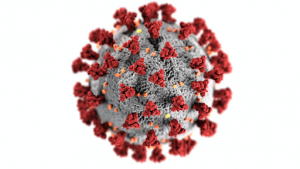
WHY SHOULD I GET A FLU SHOT DURING THIS PANDEMIC YEAR?
Experts feel that it is extremely important during this pandemic to get your flu shot and feel that it is best to do it earlier in the fall rather than waiting. Fortunately flu vaccines are now readily available at doctors’ offices and pharmacies, and physicians and public health officers are encouraging people to get vaccinated. This year, vaccine manufacturers will be producing 190 million doses (an increase of 20 million from years prior) and hopefully, vaccine rates will be higher than 50%, which they unfortunately have not been in the past. Manufacturers currently have the ability to make more if needed during the season, but that could change if a COVID-19 vaccine is approved as there will be more competition for supplies at that point.
Preliminary CDC data for last flu season (October 2019-May 2020), showed that the flu was a factor in 18 million visits to health care providers in the US, resulting in 410,000 hospitalizations and around 64,000 deaths. Getting a flu shot may help prevent catching influenza altogether, or at least lessen the symptoms, and thus will likely decrease visits to urgent care centers and the ER, lessening the burden on the healthcare system and preventing co-mingling of flu patients and COVID-19 patients. The vaccine also of course helps prevent people who may only have mild illness from spreading the flu to those at higher risk of severe disease (babies, older people and those with compromised immune systems.) The 2019-2020 US flu vaccine was 40% effective on average (higher than in the two prior seasons)— meaning that it reduced the chances by 40% that someone exposed to the virus had symptoms severe enough to visit a doctor or hospital.
Many, but not all, symptoms of flu are similar to those of COVID-19, including fever, chills, cough, sore throat, muscle or body aches, headaches and fatigue. Given the similarities, it’s likely that some people who normally wouldn’t require a doctor’s visit for the flu will be encouraged to see a physician or go to the emergency room for flu-like symptoms. There is also concern that having both diseases at the same time could be dangerous; as Dr. Ashish Jha (director of Harvard Global Health Institute) says, “We don’t know yet whether that could compound either illness, but why take the risk?”
So, get your flu shot as soon as it is available to you! If you are a patient of The Village Doctor, call the office at (650) 851-4747 or email to schedule an appointment for your flu shot (it can be given outside during a quick visit). Alternatively, most pharmacies offer walk-in visits for flu vaccines or you may be able to find a flu clinic as well. If you have a student away at school, make sure they remember to visit student health to get their flu shot done. Remember that it takes about two weeks after getting the shot to develop full immunity, so earlier is best this year.
(Jackie Phillips, MD, October 5, 2020)
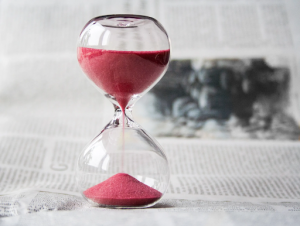
WHAT IS THE TIMELINE BETWEEN BEING EXPOSED TO COVID-19 AND SYMPTOMS?
The time from exposure to symptom onset (known as the incubation period) can be as few as 2 days to more than 14 days, though the average time for symptoms to appear is five days after exposure.
97.5% of those who become symptomatic will begin to show symptoms within 11.5 days. However, 1 in 100 people will take longer than 14 days.
We know that a person with COVID-19 can be contagious 2 to 3 days before starting to experience symptoms. People are most likely to spread the virus to others during the 48 hours before they start to experience symptoms.
Face masks, physical distancing, and contact tracing can help reduce the risk that someone who is infected but not yet experiencing symptoms may unknowingly infect others.
(Sky Pittson, MD, October 5, 2020)
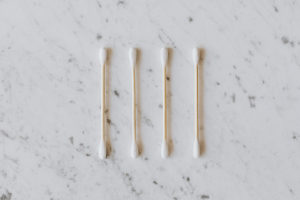
IF I’VE BEEN EXPOSED, HOW SOON SHOULD I BE TESTED FOR COVID-19?
The short answer is: after a known exposure, it is technically not very helpful to test for COVID-19 until you develop symptoms. With the incubation period extending up to 14 days, prior to that 14-day point a negative test doesn’t tell us much as it could still turn positive later. If you develop symptoms, a test can then help to determine if you should continue on the 14-day quarantine path or if you should switch to the isolation and care recommendations for those who have been infected.
When is your test, on average, most likely to be positive if you are infected? The answer to this is sometime between 5 and 8 days after exposure. We know that 50% of people who will develop symptoms do so by day 5 and we know that test sensitivity for detecting infection begins to decrease again sometime after day 8.
While most people who develop symptoms and test positive do so within this time period, not all do. You won’t know for sure that you’re not infectious until 14 days after exposure. Even if your test at the 7-day mark, for example, was negative.
This is why the CDC recommends a 14-day quarantine after known COVID-19 exposure. Basing your contagiousness on symptoms or on a negative test done too early can cause you to unwittingly transmit infection to others. We know that many people begin to shed virus up to a few days prior to developing symptoms and we also know that a good percentage of people remain asymptomatic even though they have been infected. We know some asymptomatic infected patients do transmit the virus to others without knowing it. We know that those who eventually develop symptoms can transmit the virus up to a few days before they even know they’re sick. And we know that those with a negative test done earlier than 14 days after exposure can still develop infection and transmit it to others, up to 14 days after exposure.
So, to be safest to those around you, the best thing to do after a known COVID-19 exposure is to hunker down and settle in for some quality quarantine time.
(Jennifer Abrams, MD, October 5, 2020)
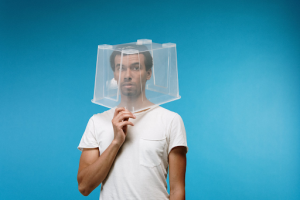
WHAT SHOULD I DO IF I OR FAMILY MEMBERS TEST POSITIVE FOR COVID-19?
First, remember that the majority of people sick with coronavirus do absolutely fine. Early data suggests that 80% of people will have mild to very mild symptoms of (maybe) fever, cough, sore throat, loss of taste or smell. Less common are symptoms of runny nose, sneezing, or even diarrhea. If you are older or have other underlying medical conditions (obesity, diabetes, high blood pressure, chronic lung disease, or are immunocompromised) you should take extra precautions and follow guidance from your doctor.
Once you have either a confirmed diagnosis, CDC guidelines on isolation can be found here. To be clear, if a member of your household tests positive, everyone must isolate themselves from individuals outside the house. Plans for meal and food delivery should be ready as well as those for vigorous disinfecting, handwashing and improving ventilation. It is important to watch for signs of worsening breathing which can be monitored with a pulse oximeter. These small devices can be easily purchased from a pharmacy or Amazon. If you have one, it can be a useful way to report data to your physician. Keep your doctor’s number handy as well as that of a close friend or family member who can check on you.
Many county health departments track all patients who are positive for COVID-19 and will perform clinical follow up by phone. In addition, since we are well into the disease, hospitals are well set up to treat patients requiring hospitalization.
If the infected family member lives with others and is an adult, they should isolate in a room preferably with their own bathroom. This is hard to do for many, but planning for this can decrease anxiety if it happens. If a child is COVID-19 positive, an adult should isolate with the child. The adult can wear a mask and do their best to disinfect. There are several cases where one member of a family is positive but the others do not contract the virus, so it is possible to stay well. If you live alone, you should stay in very close contact with your medical professional regarding any symptoms you develop, especially if they worsen.
Treatment: The most important aspect of treatment is the general self care that allows for the immune system to do its job effectively – sleep, rest, hydration and healthy diet. In terms of symptomatic treatment, think of what you might do for the flu:
- Tylenol or Advil for fever, aches and sore throat
- Cough drops, warm tea with honey, steamy shower for day-time cough
- Consider asking your doctor for a stronger cough suppressant if you’re not getting any rest due to night-time cough
Supplements: No supplements have yet been proven to effectively treat COVID-19. Vitamin D, vitamin C and zinc are the most often discussed, but currently there is not enough evidence to recommend them. Some health care providers recommend avoiding taking supplements for COVID-19 treatment until we have more data.
These are scary times, but hopefully these tips will help ease your anxiety and prepare you and your family for the worst, while hoping and striving for the best.
(Prerana Sangani, MD, October 5, 2020)

If you have made it this far, time for a reward, something to lighten your day, and acknowledge the human spirit. Find some escape, or perhaps even inspiration, in this ever growing collection of works and perspectives gathered from around the world. Please contact me directly if you have come across something that has lifted your heart today. Dr. Eric Weiss
Cello cello?
Sorry, Dad-joke. Kidding aside, this is a lovely and moving arrangement of 278 cellists from 29 different countries playing “Adagio for Strings” by Samuel Barber. This is the 10th video created to connect with other cellists across the world, and to create something to collaborate on during COVID-19 times. The “Adagio for Strings” is commonly used as a song of anguish and sadness, and the video features over 100 memorials of people who have left this earth, uploaded by the cellists they appear next to. We are all connected.
Read more about the Covid Cello Project here.

To stay with our cello theme, this is another lovely rendition of “Adagio for Strings”, performed by the Vienna Philharmonic. Their Summer Night Concert was performed on June 20th, 2019. It is an annual open-air event, which has been held since 2008. The park of Schönbrunn Palace in Vienna, Austria is the magical setting for the concert, which is free of charge for all residents and visitors of the city. Sit back, close your eyes, enjoy.
Again, CV🦠News is a labor of love. If you enjoy reading this, please share widely! Was this forwarded to you by a friend? Please subscribe here.
*****
Yours, in health and resilience,
Eric and the TVD MD team…





